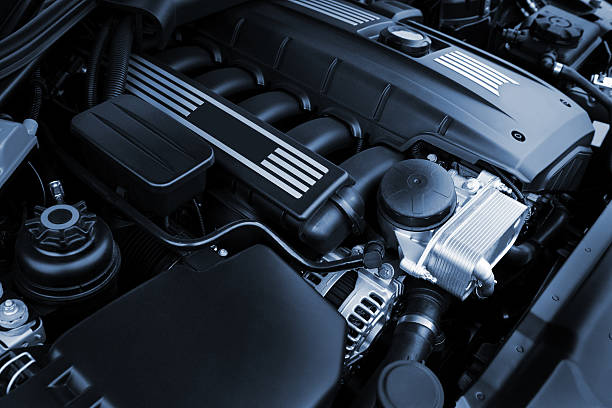Variable Compression Ratio Engines: Redefining Efficiency and Performance
The automotive world is on the cusp of a revolutionary breakthrough that promises to transform the way we think about engine efficiency and performance. Variable compression ratio engines represent a paradigm shift in internal combustion technology, offering a tantalizing glimpse into the future of automotive engineering. This groundbreaking innovation allows engines to dynamically adjust their compression ratio on the fly, optimizing performance and fuel economy in real-time. As we delve into this cutting-edge technology, prepare to discover how it's poised to reshape the automotive landscape and usher in a new era of adaptable, high-performance powertrains.

This adjustment is typically achieved through a complex system of linkages and actuators that can raise or lower the crankshaft relative to the cylinder head. Some designs utilize a multi-link system that replaces the conventional connecting rod, while others employ an eccentric shaft mechanism. The result is an engine that can seamlessly transition between high compression ratios for improved efficiency during light loads and lower ratios for increased power output when needed.
The Quest for the Perfect Balance
The holy grail of engine design has always been to achieve the perfect balance between power and efficiency. Variable compression ratio engines bring us closer to this ideal than ever before. By adjusting the compression ratio in real-time, these engines can optimize combustion for any given driving condition.
During highway cruising, where efficiency is paramount, the engine can operate at a higher compression ratio, extracting more energy from each drop of fuel. When the driver demands more power for acceleration or climbing, the compression ratio can be lowered to prevent knocking and allow for more aggressive combustion. This adaptability ensures that the engine is always operating at its optimal point, regardless of the driving scenario.
Overcoming Technical Hurdles
Implementing variable compression ratio technology is no small feat. Engineers have grappled with numerous challenges in bringing this concept to production. One of the primary obstacles has been the complexity of the mechanical systems required to alter the compression ratio. These systems must be robust enough to withstand the extreme forces and temperatures present in an engine while still being able to react quickly to changing conditions.
Another significant hurdle has been the integration of variable compression with other advanced engine technologies. Modern engines often feature direct injection, turbocharging, and variable valve timing. Coordinating these systems with variable compression requires sophisticated engine management software and precise control mechanisms. The goal is to create a seamless driving experience where the driver is unaware of the constant adjustments happening under the hood.
Real-World Applications and Performance Gains
As variable compression ratio engines transition from concept to reality, early adopters are already seeing impressive results. Some production models featuring this technology have reported fuel economy improvements of up to 15% compared to their fixed-ratio counterparts. Moreover, these engines have demonstrated the ability to deliver V6-level performance with the fuel efficiency of a four-cylinder engine.
The technology’s versatility also allows manufacturers to streamline their engine lineups. A single variable compression engine can potentially replace multiple fixed-ratio engines, offering a range of performance characteristics that previously required separate powertrains. This consolidation can lead to significant cost savings in development and production.
The Future of Engine Design
Variable compression ratio technology is poised to become a cornerstone of future engine design. As emissions regulations continue to tighten globally, the ability to optimize engine operation for both performance and efficiency will become increasingly crucial. This technology may also play a pivotal role in extending the viability of internal combustion engines in an era increasingly focused on electrification.
Looking ahead, we can expect to see further refinements and innovations in variable compression systems. Integration with artificial intelligence and predictive algorithms could allow engines to anticipate driving conditions and adjust preemptively. Additionally, the technology could be combined with alternative fuels or hybrid systems to create even more efficient and versatile powertrains.
Implications for the Automotive Industry
The widespread adoption of variable compression ratio engines could have far-reaching implications for the automotive industry. Manufacturers investing in this technology may gain a competitive edge in markets where fuel efficiency and performance are key selling points. It could also impact the way vehicles are marketed and sold, with the focus shifting from traditional metrics like displacement and cylinder count to more holistic measures of engine capability.
Furthermore, the technology could influence vehicle design and packaging. As engines become more adaptable, designers may have greater flexibility in how they integrate powertrains into vehicle architecture. This could lead to new and innovative vehicle layouts that optimize space and weight distribution.
Consumer Experience and Driving Dynamics
From a driver’s perspective, variable compression ratio engines promise to deliver a best-of-both-worlds experience. The seamless transition between efficiency and performance modes means that drivers can enjoy responsive acceleration when needed without sacrificing fuel economy during everyday driving. This adaptability could also enhance the overall driving experience, with engines that feel more refined and capable across a broader range of conditions.
However, educating consumers about the benefits of this complex technology may present a challenge. Manufacturers will need to develop clear and compelling ways to communicate the advantages of variable compression to potential buyers who may be unfamiliar with the concept.
Environmental Impact and Sustainability
As the automotive industry grapples with the need to reduce its environmental footprint, variable compression ratio engines offer a promising pathway to improved sustainability. By optimizing fuel consumption and reducing emissions across various driving conditions, these engines could play a significant role in meeting increasingly stringent environmental regulations.
Moreover, the technology’s ability to extract more power from smaller displacement engines could accelerate the trend towards downsizing, further reducing the overall environmental impact of vehicle fleets. This aligns with global efforts to combat climate change and reduce dependency on fossil fuels.
Conclusion: A New Chapter in Automotive Engineering
Variable compression ratio engines represent a significant leap forward in automotive technology, offering a glimpse into the future of internal combustion. By dynamically adapting to driving conditions, these engines promise to deliver unprecedented levels of efficiency and performance. As the technology matures and becomes more widespread, it has the potential to reshape the automotive landscape, influencing everything from vehicle design to consumer expectations.
While challenges remain in terms of complexity and cost, the benefits of variable compression ratio technology are undeniable. As we look to the future of mobility, these adaptable engines stand as a testament to the continued innovation in automotive engineering, proving that there’s still plenty of untapped potential in the world of internal combustion. The road ahead for variable compression ratio engines is exciting, and it’s clear that this technology will play a crucial role in driving the automotive industry forward into a more efficient and performant future.





